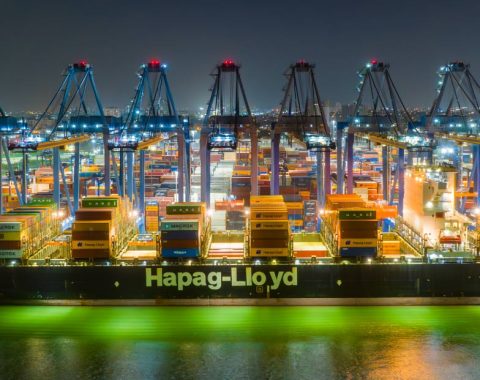Amidst a rapidly transforming global geopolitical landscape, Colombia faces significant economic challenges, characterized by low value-added generation and poor productivity performance. In recent decades, the country has experienced a setback in its industrial sector and a very incipient development in services based on innovation and knowledge. This situation is exacerbated by the high dependence on the extractive mining-energy sector and global challenges such as biodiversity loss and undeniable climate change.
Amidst all this, the progressive government of Gustavo Petro aims to embark Colombia on an ambitious project to redefine its economic and productive landscape. The National Policy of Reindustrialization, a visionary plan for the period 2024-2034, seeks to transform the Colombian economy, shifting it from a dependence on extractive activities to one based on knowledge, productivity, sustainability, and inclusion. This project not only seeks to change Colombia’s economic approach but also to ensure a more sustainable and inclusive future. Below, we briefly explain the content of the draft of this CONPES document, drafted by the National Department of Planning.
Objectives of the Reindustrialization Policy
The National Policy of Reindustrialization aims to transform the productive sector of goods and services in Colombia to face the challenges of climate change, accelerated technological change, and a changing geopolitical environment. The specific objectives include:
- Closing Productivity Gaps: Improve efficiency in the production of goods and services by developing human and technological capabilities.
- Diversification and Sophistication of the Exportable Offer: Promote a more diverse and sophisticated internal and exportable productive matrix.
- Strengthening Productive Linkages: Encourage the creation of linkages between sectors and regions, and greater participation in global value chains.
- Economic Integration with Developing Regions: Deepen economic ties with Latin America, the Caribbean, Asia, Africa, Europe, and North America.
- Improvements in the Institutional Framework: Strengthen institutions and incentives for value aggregation, boosting productivity, competitiveness, and innovation.
Strategic Bets
The policy focuses on four intersectoral strategic bets:
- Just Energy Transition: Adapt the economy to a sustainable and equitable energy model.
- Agroindustry and Food Sovereignty: Strengthen agroindustry to improve self-sufficiency and food sovereignty.
- Reindustrialization in the Health Sector: Innovate in the health sector to improve care and stimulate the economy.
- Reindustrialization Based on the Defense Sector for Life: Use the defense industry as an engine for social welfare.
Business Opportunities
This ambitious reindustrialization plan opens a wide spectrum of business opportunities in multiple sectors. The just energy transition, for example, offers possibilities in renewable energies, energy efficiency, and clean technologies. In agroindustry, there are opportunities in sustainable food production, biotechnology, and efficient distribution systems. The health sector promises advances in biomedicine, digital health services, and advanced medical equipment. Finally, reindustrialization in the defense sector opens paths in security technologies, cybersecurity, and innovative defense systems.
Moreover, the reindustrialization project in Colombia opens doors in other key sectors. One of them is education and technical training, where the demand for specialized skills in the new industries will generate a growing market for educational institutions and online training platforms. This includes not only technical and professional education but also training in soft and digital skills, essential in the knowledge economy.
Another area with significant potential is information and communication technology (ICT). With the digitalization of the economy, opportunities arise in software development, cybersecurity, big data, and artificial intelligence solutions. These technologies will be crucial in improving the efficiency and competitiveness of reindustrialized industries, from manufacturing to services.
Finally, the focus on sustainability opens a vast field for innovation in the circular economy. This includes the development of new materials, advanced recycling processes, and solutions for sustainable waste management. Companies that can offer solutions to reduce the carbon footprint and improve resource efficiency will have a competitive advantage in this new economic environment.
Action Plan and Financing
The document details an action plan and follow-up strategies, along with a financing scheme to implement these objectives and strategies. The importance of coordination between different sectors and levels of government to ensure the success of the policy is emphasized.
The action plan for the reindustrialization of Colombia is comprehensive and multifaceted. It proposes a series of initiatives and projects ranging from the modernization of infrastructure to the promotion of research and development. Special attention is paid to the creation of special economic zones, the promotion of industrial clusters, and the implementation of training and skill development programs. In addition, the modernization of the country’s logistical and digital infrastructure is contemplated to improve connectivity and efficiency.
In terms of financing, the project will be supported by a combination of public and private funds. The government plans to use a part of the national budget, complemented by investments from international organizations and development partners. Private investment will be encouraged through public-private partnership schemes, and the active participation of national and international investors will be sought. In addition, the use of innovative financial instruments, such as green bonds and social impact bonds, is contemplated to attract capital towards sustainable and high social impact projects.
With this clear vision and well-defined strategies, Colombia would position itself at the forefront of reindustrialization in Latin America, marking a path towards a more equitable and sustainable economic development for all its citizens. This project not only represents a significant change in the country’s economic structure but also offers numerous opportunities for entrepreneurs and investors looking to participate in an emerging and dynamic economy.





